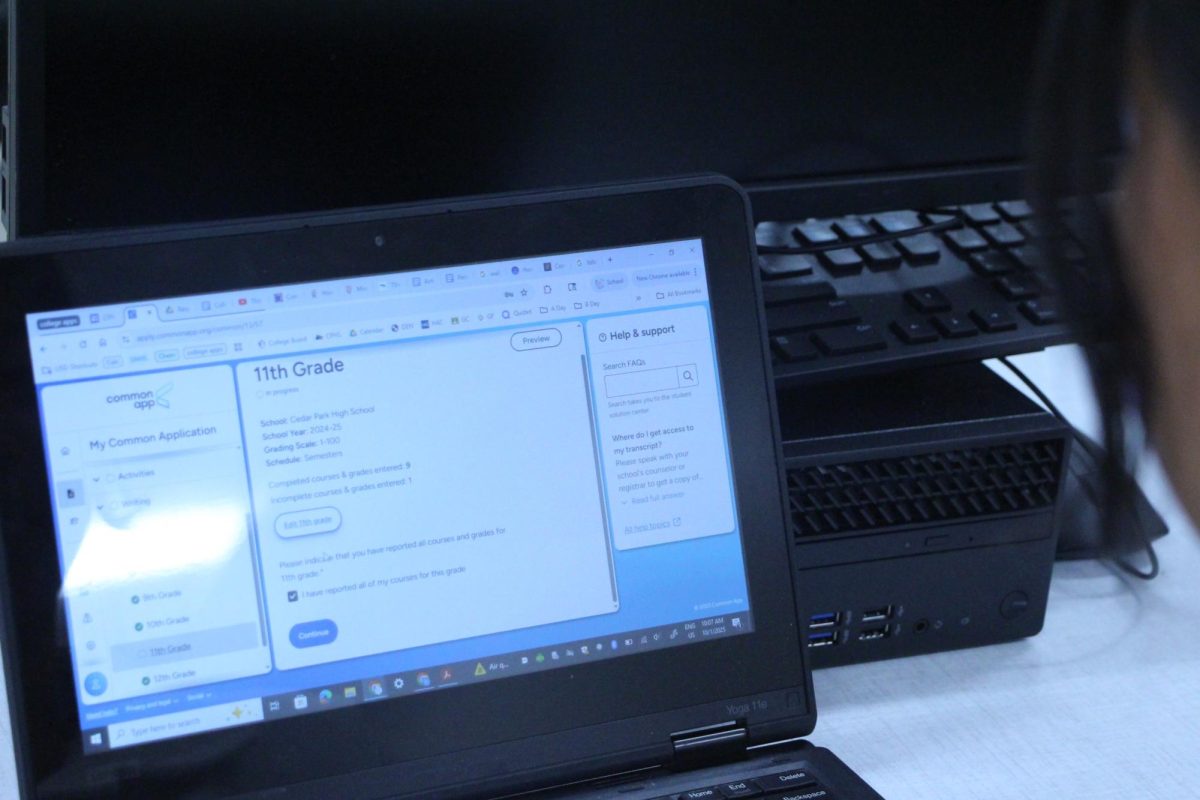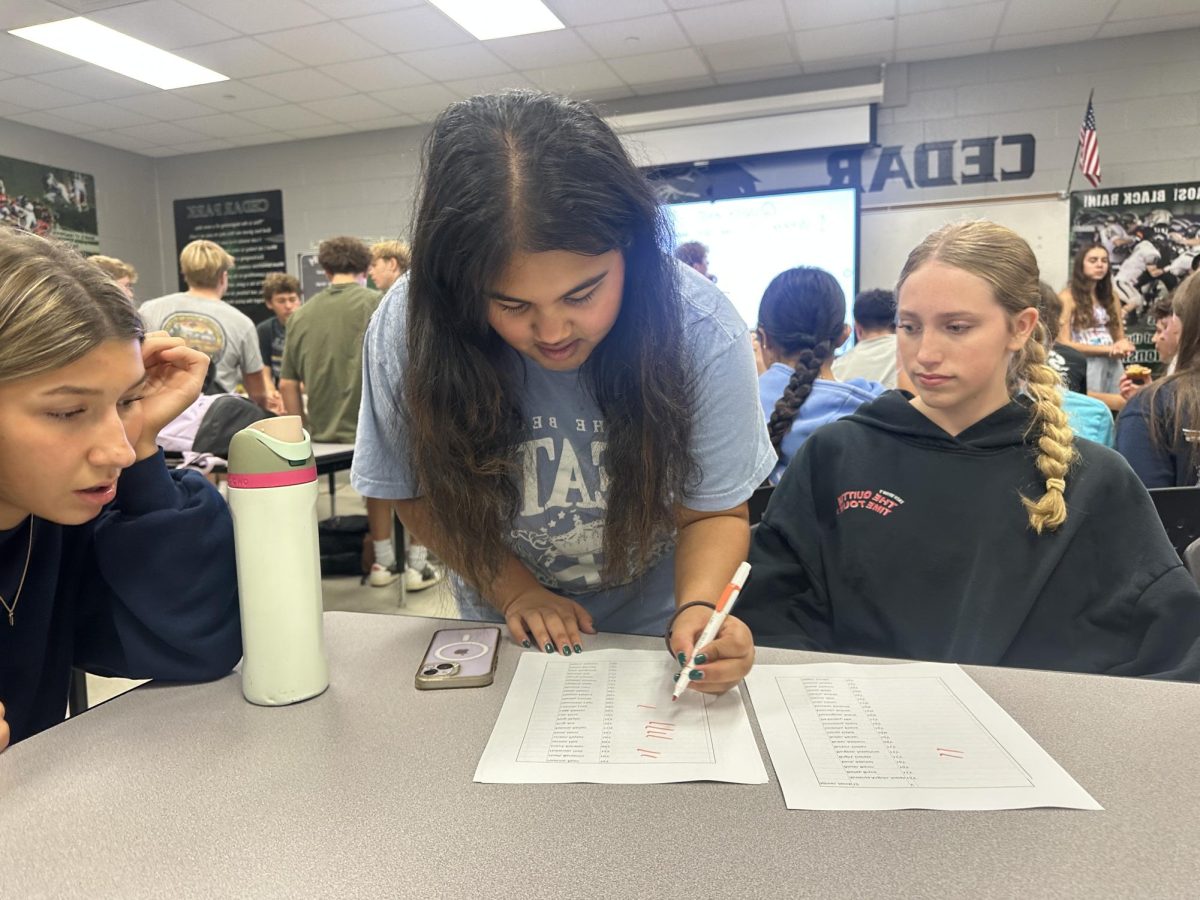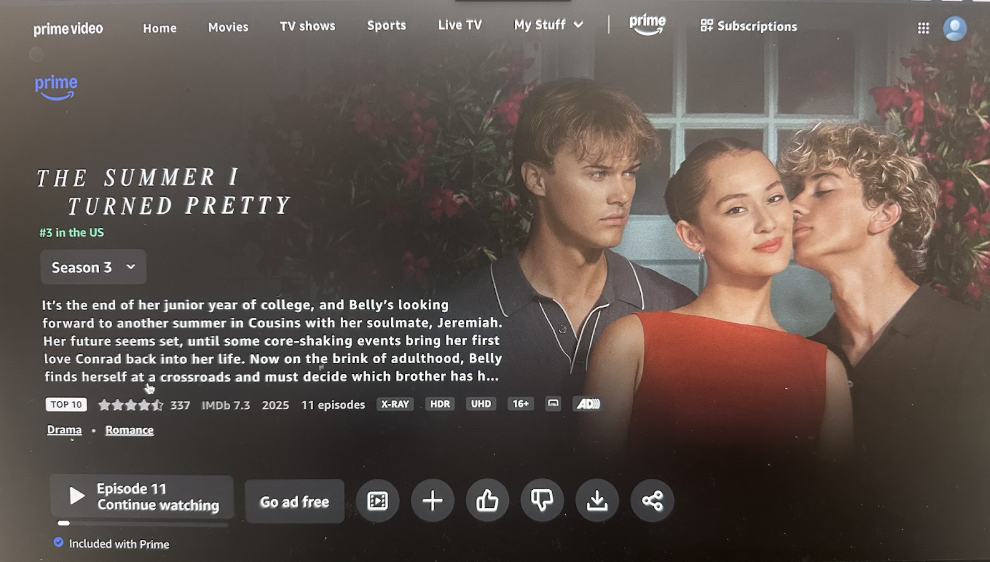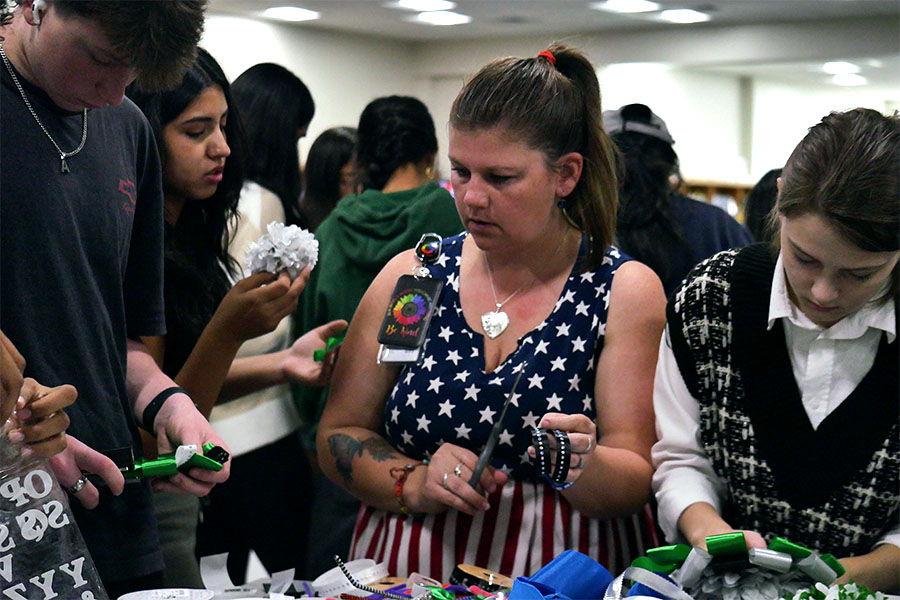With the massive amounts of technology available to 21st century teens, it shouldn’t come as a surprise the education system would eventually catch up. Though class isn’t necessarily in session via the FaceTime app on the iPhone 4 or over Skype, education throughout Texas is being revamped to include new equipment, new software and new techniques of reaching students in the tech-savvy world they’ve grown up in.
Cedar Park High School students involved in extracurricular activities have begun to witness these changes. One example of new types of technology available is SmartMusic, a program for band students that allows them to record themselves playing their music at home and receive an instant score based on the number of notes played correctly.
“It’s actually pretty cool,” Grace Van Allen, freshman, said. “It records your music and tells you what notes you got wrong and you send in your score.”
Leander ISD has also been in the process of integrating web 2.0 tools into elementary, middle and high school education. Web 2.0 tools entail a two-way communication between users, hence the term “2.0.” This year an instructional technology facilitator joined the curriculum writing team to help get these tools embedded into core subject curriculums.
“The district is moving in the right direction,” Nancy Tarvin, Executive Director of Elementary Curriculum, said. “We’ve been studying books on these tools [in order to ensure] a guaranteed and viable curriculum, so that [the integration] isn’t hit-or-miss.”
New software is currently in the works, such as Uniservity, which is a district-wide program allowing students to turn in assignments electronically and teachers to communicate comments in one neat package. Trainings for the program are underway and it is expected to be up and running for select pilot schools in the coming months. Cedar Park has been selected among other schools in LISD as a pilot school. Processes are currently in place to instruct students on how to properly and safely use these web tools to empower their education.
“The goal is to enhance your critical thinking skills [to help] take ownership of your learning that no teacher can have,” Tarvin said. “Bret Champion always says that he wants technology to be the pencil of our time. The pencil allowed for communication, and [these new programs] will allow for communication on a global scale.”
Districts outside of Leander such as Round Rock ISD have made laptops available to each student and teacher and installed a fully functional wireless network throughout each school. The result, aside from allowing students to complete their homework in a familiar, tech-friendly online format, is a new requirement that forces teachers to work outside of class to become able to use these programs. This ability to be comfortable with modern software is often becoming a hiring point for teachers, according to Austin ISD administrators.
Higher education centers and universities are also turning to more modern means of spreading information to students. iTunesU, a program announced by Governor Rick Perry, allows students and teachers alike to access materials and information in one simple program. Online programs are even being offered to high school dropouts that allow them to attain their GED electronically through the Virtual School Network.
Though innovation is most always considered an improvement, some students caution against absolute dependency on gadgets.
“New technology isn’t necessarily a bad thing, but you can’t get too dependent on it,” Daniel Wessels, junior, said. “If you’re too dependent on one system and it crashes then you could potentially fail your class.”
Whether Texas schools will eventually rely entirely on electronic programs for learning or remain relatively wireless in the next few years is a mystery to many, but it is a fact that education is beginning to catch up to the constantly active, tireless world of technology and innovation.










![Broadcast, yearbook and newspaper combined for 66 Interscholastic League Press Conference awards this year. Yearbook won 43, newspaper won 14 and broadcast took home nine. “I think [the ILPC awards] are a great way to give the kids some acknowledgement for all of their hard work,” newspaper and yearbook adviser Paige Hert said. “They typically spend the year covering everyone else’s big moments, so it’s really cool for them to be celebrated so many times and in so many different ways.”](https://cphswolfpack.com/wp-content/uploads/2025/05/edited-ILPC.jpg)





![Looking down at his racket, junior Hasun Nguyen hits the green tennis ball. Hasun has played tennis since he was 9 years old, and he is on the varsity team. "I feel like it’s not really appreciated in America as much, but [tennis] is a really competitive and mentally challenging sport,” Nguyen said. “I’m really level-headed and can keep my cool during a match, and that helps me play a bit better under pressure.” Photo by Kyra Cox](https://cphswolfpack.com/wp-content/uploads/2025/09/hasun.jpg)

![Bringing her arm over her head and taking a quick breath, junior Lauren Lucas swims the final laps of the 500 freestyle at the regionals swimming competition on date. Lucas broke the school’s 18-year-old record for the 500 freestyle at regionals and again at state with a time of 4:58.63. “I’d had my eye on that 500 record since my freshman year, so I was really excited to see if I could get it at regionals or districts,” Lucas said. “ State is always a really fun experience and medaling for the first time was really great. It was a very very tight race, [so] I was a bit surprised [that I medaled]. [There were] a lot of fast girls at the meet in general, [and] it was like a dogfight back and forth, back and forth.” Photo by Kaydence Wilkinson](https://cphswolfpack.com/wp-content/uploads/2025/03/Kaydence-2.7-23-edit-2.jpg)
![As her hair blows in the wind, senior Brianna Grandow runs the varsity girls 5K at the cross country district meet last Thursday. Grandow finished fourth in the event and led the varsity girls to regionals with a third place placement as a team. “I’m very excited [to go to regionals],” Grandow said. “I’m excited to race in Corpus Christi, and we get to go to the beach, so that’s really awesome.” Photo by Addison Bruce](https://cphswolfpack.com/wp-content/uploads/2025/10/brianna.jpg)











